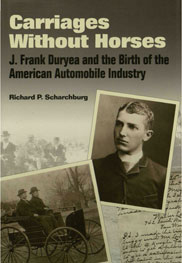Technical Paper
A Parametric Computationally - Based Study of Windshield Heat Transfer Subject to Impinging Airflow
2004-03-08
2004-01-1382
Impinging jets are an established technique for obtaining high local heat transfer coefficients between a fluid and a surface. Factors such as jet attachment, surface angle, jet angle, separation distance between jet orifice and surface of impingement, and trajectory influence heat transfer dramatically. In the current study, the specific application of interest is air issuing from the defroster's nozzles of a vehicle and impinging on a glass windshield. The current work is aimed at studying the flow patterns off a vehicle windshield as a result of air issuing from various nozzle configurations. The effects of openings' geometry (circular vs rectangular), number of openings, angle that the windshield makes with the horizontal plane and angle of impinging jet, on windshield heat transfer is examined. An optimal configuration will be recommended for better heat transfer.

